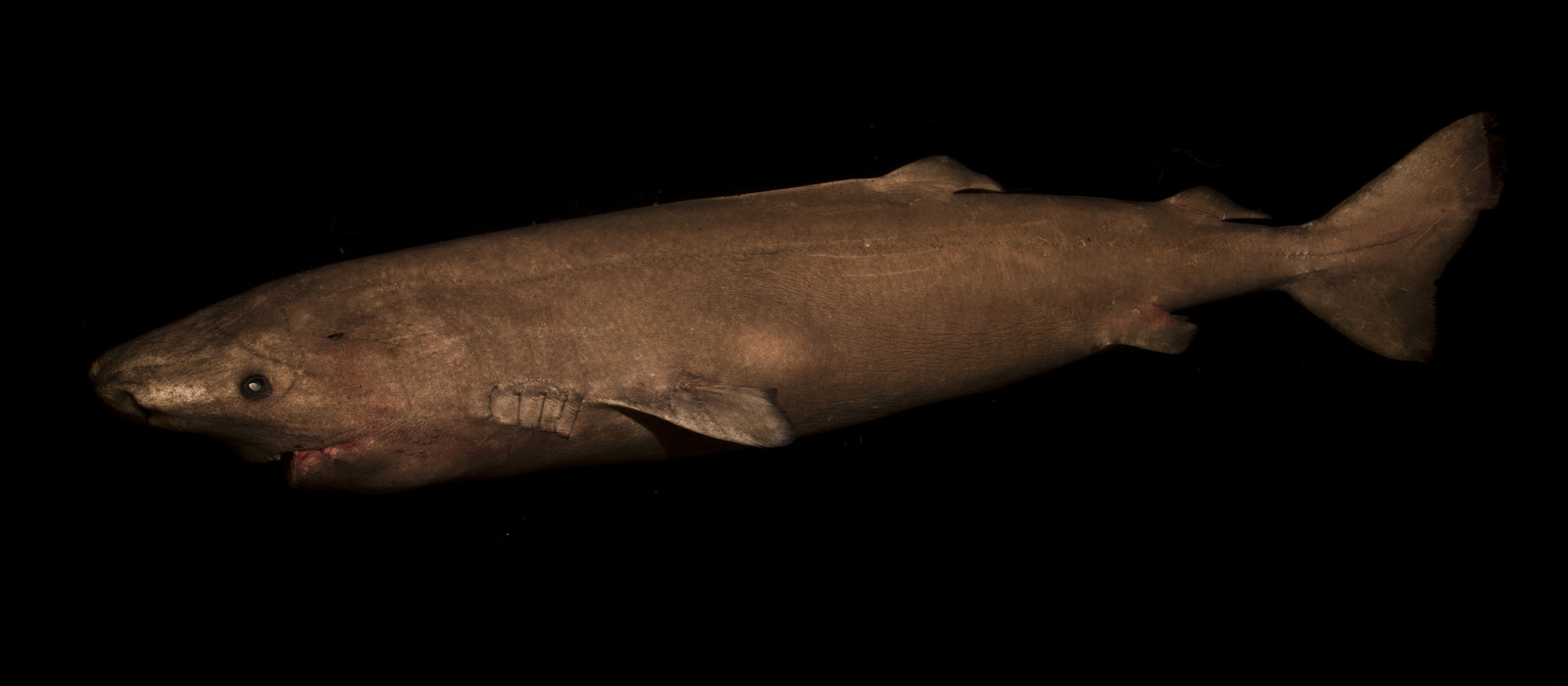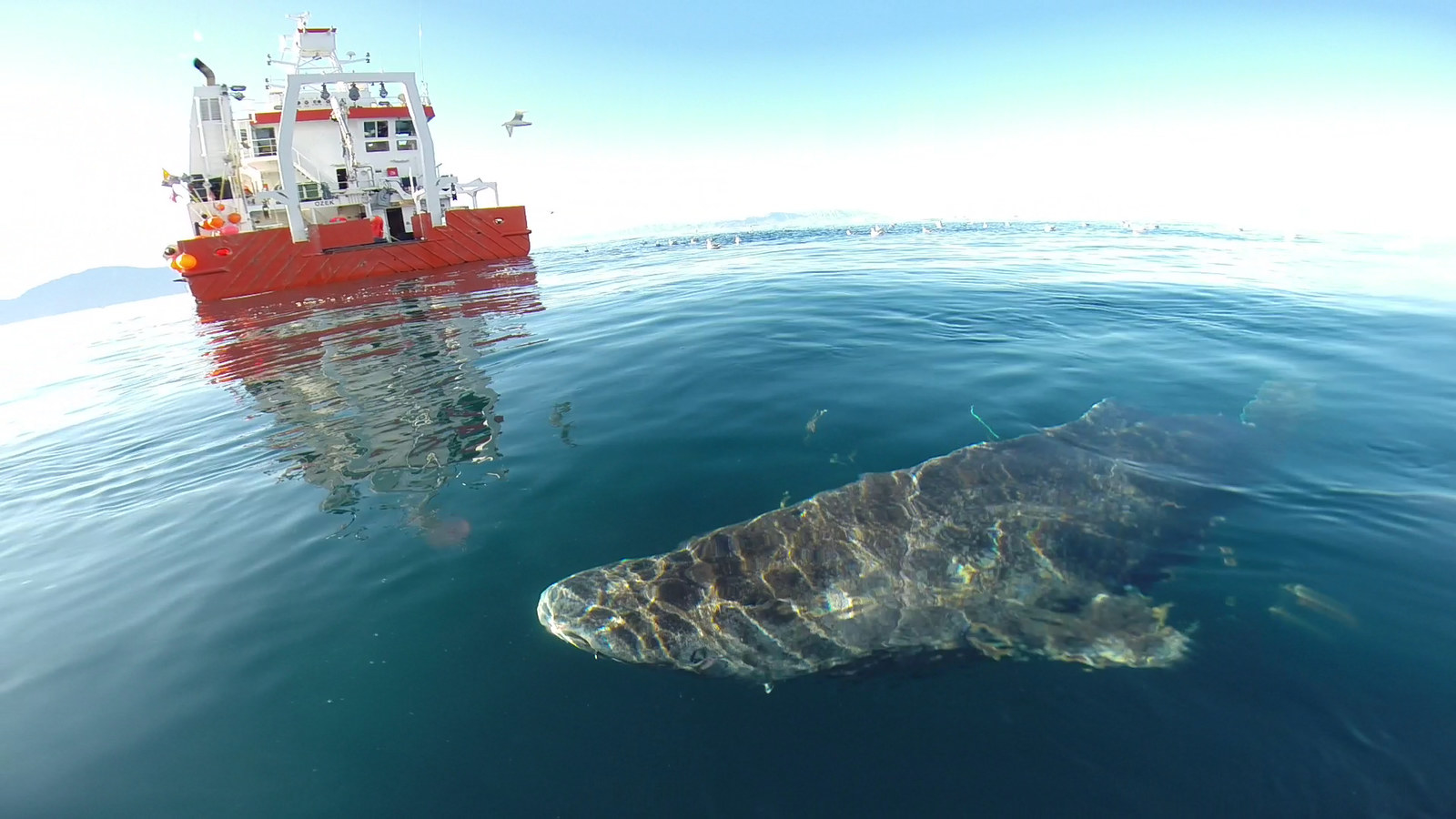A mysterious, slow-moving deep-sea shark has been found to live for nearly 400 years.

The Greenland shark, Somniosus microcephalus, is a member of the "sleeper shark" family. It moves very slowly around the deep ocean.
They grow to enormous sizes – in some cases more than 5 metres (16 feet) long – and live in very cold waters in the far north Atlantic, sometimes at the surface but often as deep as 1,800 metres (1.1 miles). They cruise along at 0.74 metres per second, or about three-quarters of a mile an hour.
It was already known that they can live for more than 200 years, but new research has shown that is literally only half the story.

The study, by researchers at the University of Copenhagen and the University of Oxford, is published in Science. They looked at the lenses of the eyes of 28 female sharks that had been caught by accident in fishing nets. The material in the lenses isn't replaced, so it's as old as the shark is – in the rest of the body, the cells are replaced every few years. That meant that the researchers were able to use radiocarbon dating on the lenses to work out how old the sharks were.
Julius Nielsen, the lead author on the study, told BuzzFeed News: "This system has been used for whales, but this is the first time it's been used on fish."
The oldest shark the researchers found, a 502cm (16.5 feet)-long whopper, was estimated to be 392 years old. That makes it the oldest vertebrate known to science.

It also means that when it was born (the Greenland shark gives birth to live young, not eggs), the Pilgrims had only recently settled in Massachusetts. Europe's Thirty-Year War was in its infancy. James I sat on the throne of England. It lived through the English Civil War, the Great Plague and Fire of London, the American Revolution, the Napoleonic Wars, both world wars, and the entire nine-season run of Seinfeld.
Vertebrates are creatures with backbones – the group that includes humans and all mammals, as well as birds, reptiles, fish, amphibians, and so on. There are longer-lived animals, but they're invertebrates. Some corals and sponges have been known to live more than 2,000 years, while a species of clam called the quahog can live for 500.
And the researchers say that the life expectancy for a female Greenland shark is at least 272 years.

Nielsen said that the researchers were 95% sure that the oldest shark was between 272 and 512 years old. "We're fully aware that it's a big uncertainty," he said, "but even the lowest estimate would make it the longest-lived vertebrate animal."
The researchers also say that females don't become adult until they're more than 150 years old. Earlier studies have said that the females don't reach sexual maturity until they're more than 400cm (13.5 feet) long, and that by their estimation that means they would have to be at least 156 years old.
This shark, caught by accident in a fisherman's net, is "only" about 300cm (9.8 feet) long. But that means it's still at least 130 years old.

So it was swimming around in the last years of Queen Victoria's reign.
Little else is known about the Greenland shark. They are regularly caught accidentally, and seals and even polar bears have been found in their stomachs, but how they feed and live, and how common they are, are largely unknown.
Nielsen said: "I have spent five years studying Greenland sharks. They're an amazing animal; I don't think that many people know much about them." He said he hoped this study would bring more attention to them.
